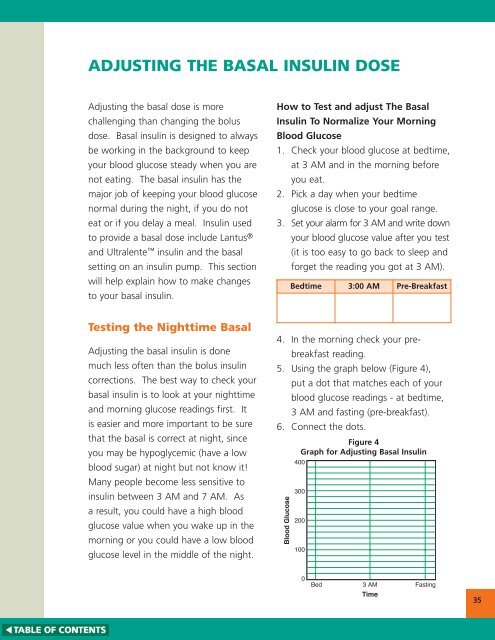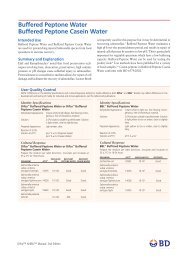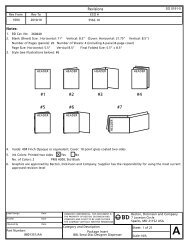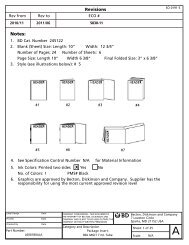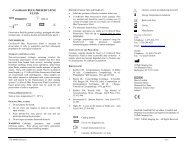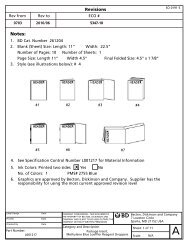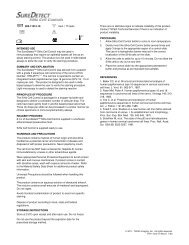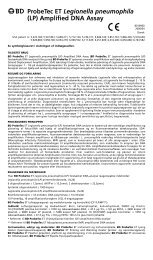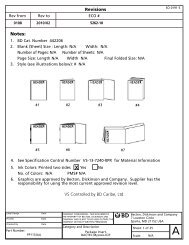Create successful ePaper yourself
Turn your PDF publications into a flip-book with our unique Google optimized e-Paper software.
ADJUSTING THE BASAL INSULIN DOSE<br />
<strong>Adjust</strong>ing the basal dose is more<br />
challenging than changing the bolus<br />
dose. Basal insulin is designed to always<br />
be working in the background to keep<br />
your blood glucose steady when you are<br />
not eating. The basal insulin has the<br />
major job of keeping your blood glucose<br />
normal during the night, if you do not<br />
eat or if you delay a meal. <strong>Insulin</strong> used<br />
to provide a basal dose include Lantus ®<br />
and Ultralente insulin and the basal<br />
setting on an insulin pump. This section<br />
will help explain how to make changes<br />
to your basal insulin.<br />
Testing the Nighttime Basal<br />
<strong>Adjust</strong>ing the basal insulin is done<br />
much less often than the bolus insulin<br />
corrections. The best way to check your<br />
basal insulin is to look at your nighttime<br />
and morning glucose readings first. It<br />
is easier and more important to be sure<br />
that the basal is correct at night, since<br />
you may be hypoglycemic (have a low<br />
blood sugar) at night but not know it!<br />
Many people become less sensitive to<br />
insulin between 3 AM and 7 AM. As<br />
a result, you could have a high blood<br />
glucose value when you wake up in the<br />
morning or you could have a low blood<br />
glucose level in the middle of the night.<br />
How to Test and adjust The Basal<br />
<strong>Insulin</strong> To Normalize Your Morning<br />
Blood Glucose<br />
1. Check your blood glucose at bedtime,<br />
at 3 AM and in the morning before<br />
you eat.<br />
2. Pick a day when your bedtime<br />
glucose is close to your goal range.<br />
3. Set your alarm for 3 AM and write down<br />
your blood glucose value after you test<br />
(it is too easy to go back to sleep and<br />
forget the reading you got at 3 AM).<br />
4. In the morning check your prebreakfast<br />
reading.<br />
5. Using the graph below (Figure 4),<br />
put a dot that matches each of your<br />
blood glucose readings - at bedtime,<br />
3 AM and fasting (pre-breakfast).<br />
6. Connect the dots.<br />
Blood Glucose<br />
Bedtime 3:00 AM Pre-Breakfast<br />
Figure 4<br />
Graph for <strong>Adjust</strong>ing Basal <strong>Insulin</strong><br />
400<br />
300<br />
200<br />
100<br />
0 Bed 3 AM<br />
Time<br />
Fasting<br />
35


